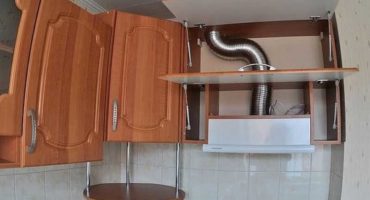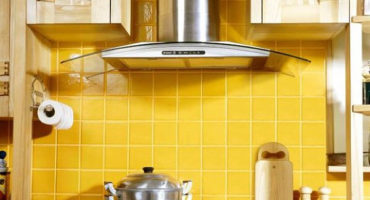The installation of an exhaust device or ventilation pipe is simply necessary in places of cooking. The hood helps to get rid of extraneous odors, which over time can eat into the surface or material. Also, the exhaust system will eliminate the excessive amount of steam in the kitchen, which also adversely affects furniture or finishing materials.
In order for the device or ventilation to function properly, you must accurately calculate the air ducts and make a reliable installation of the pipeline.
What is an air duct and how to choose its diameter
The main parameter that ensures high-quality operation of the exhaust system is the diameter of the duct. What is a duct? This is the main part of any ventilation or exhaust system. It is a pipeline (boxes are often used), with a precisely calculated inner diameter and a certain length. In large enterprises, the duct is a whole network of pipes, connections and various additional elements.
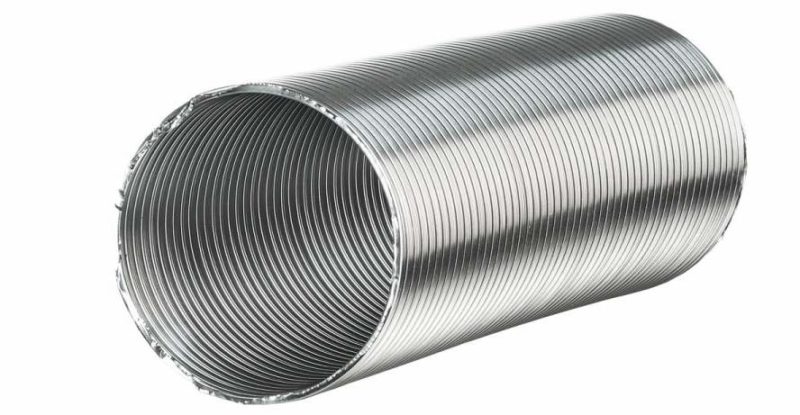
The diameter of the chimney is just as important as the material from which it is made. The main rule: the duct should not be less than the ventilation outlet in the room. The system will function properly only if the diameters of the sleeve and the hole through which the exhaust air leaves the room coincide.
If the diameters do not match, then you must use special adapters. Without them, the compounds will not be tight enough, and some of the smells, burning or steam will still leak into the kitchen.
What will lead to the wrong choice of the inner diameter of the sleeve:
- Noise increases during operation of the device, which also affects other technical specifications.
- The efficiency of the system is reduced.
- The load on the main mechanisms that are constantly involved in the work is increasing.
You should know that the size step of the ventilation pipe is 10 mm. Now the calculation is simple: the most commonly used sleeves are 180 and 200 mm. They are able to provide a quick release of air, provided that the system is installed correctly.
How to properly connect the exhaust pipes
Tightness is the main factor in the exhaust system, which contributes to its proper operation. In case of insufficient density, the compound may leak food odors, condensation or burning. Therefore, when installing the exhaust system, you should pay attention to the joints between the pipe sections.
When using plastic, special adapters should be used during the installation of the exhaust pipe. Often, the insulated surface of two elements is treated with heat-resistant sealant. Plastic is a fairly productive material: it has a long service life, it can be easily painted, has a low weight. But the installation of plastic adapters can take a lot of time, since after each installation the entire system should be checked for leaks.
When mounting an exhaust system, a corrugated aluminum pipe is also used. There are a lot of positive properties of such a building material:
- Affordable pricing. An aluminum sleeve has an average price in the building materials market, so many customers choose it.
- Even an aluminum alloy is able to withstand temperatures up to 250 degrees Celsius, which does not always give both a gas furnace and an ordinary electric hob.
- For installation, no specialized tool is required - to cut an aluminum sleeve, ordinary scissors are enough.
- Different sections of the corrugated sleeve are available. They come in very small steps, which allows the client to choose the most optimal option for themselves.
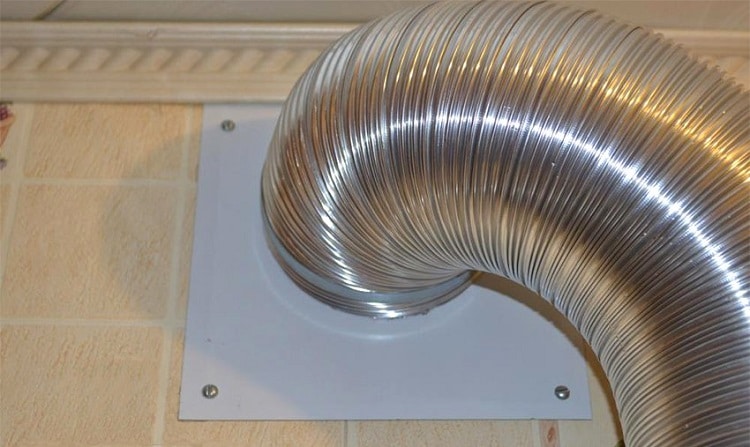
To connect the corrugated sleeve made of aluminum, metal clamps are used, on the inside of which there is a rubber seal. There are 2 bolts on the sides - with their help, you can both loosen the clamp and tighten it. The main advantages of such clamps are low price and long service life. The sealant is made of a special material that is not affected by sudden changes in temperature.
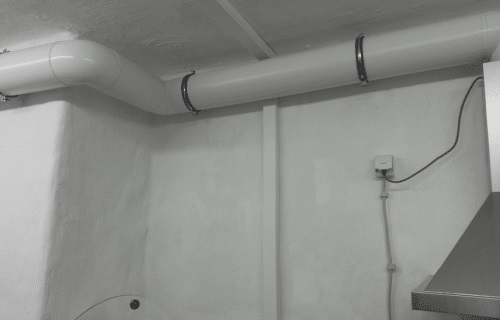
How to quickly and economically hide a pipe from the hood
The exhaust system belongs to the class of communication systems, so its appearance is often not suitable for the interior of the kitchen and should be reliably masked. But even in a room with a small area and low ceilings, such a pipeline can be masked. There are several different ways to do this:
- Decorative box made of drywall. Do-it-yourself mount. The frame is the first to be made, an ordinary metal profile is suitable as a building material. Pre-cut pieces of drywall are attached to the profile using self-tapping screws - all the excess must be removed. The last step at the discretion of the owner: painting, plastering, wallpapering.
- Installation of a peak. This decorative element should be purchased with an exhaust hood - visors come complete with kitchen furniture and carefully hide the pipeline.
- Installation of a hinged cabinet. A cheaper, but very practical option: a cabinet is mounted on the wall with cut out holes through which part of the exhaust system will pass. There is free space for the necessary things in the kitchen.
Important! Use exclusively moisture-proof drywall.
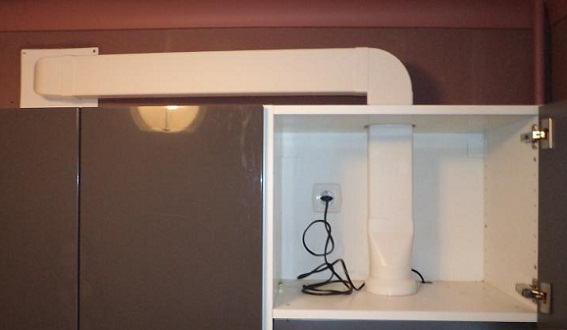
With a lack of funds, a hanging pipe can always be simply painted in a kitchen that hides the excess color. In some rooms there are interesting options: the metal ducts of the exhaust system are ground and a layer of chrome paint is applied. Stylish shine gives the hood a solid and expensive look.
- Installing the hood in the suspended ceiling. This option allows you to hide the communication system without spending extra money. A significant drawback is that if the exhaust system breaks down, the ceiling must be covered again.

The above options will allow you to hide the exhaust system, while not spending extra money.

